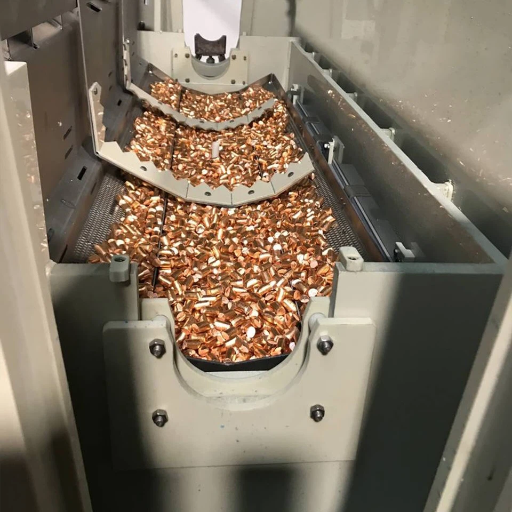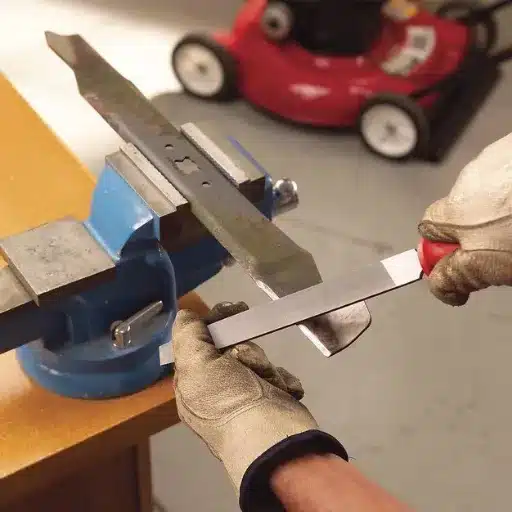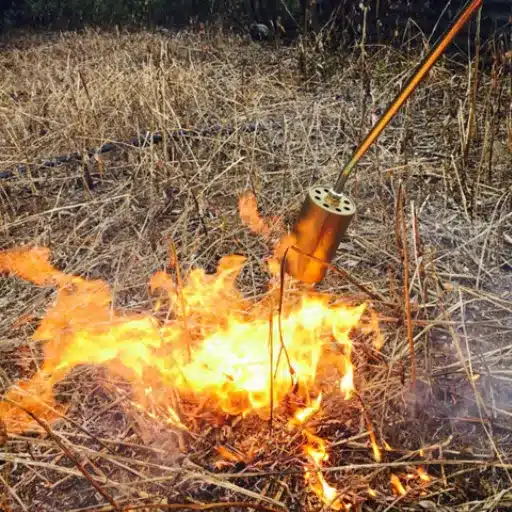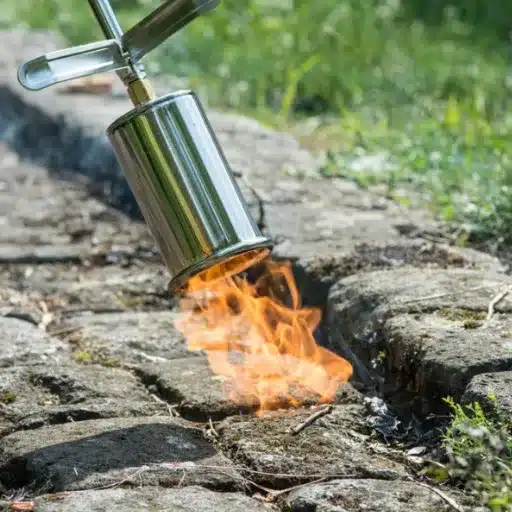Electroplating, a process used to coat an object, finds application in numerous industries including jewelry making and electronics manufacturing. Copper plating is extremely popular owing to its high electrical conductivity and resistance to corrosion. This blog is intended to be an all-inclusive manual for copper plating students, amateur do-it-yourself electroplating users as well as professionals who wish to improve their tools. We will examine all types of electroplating kits and machinery on the market and range, and offer assistance in selecting the right equipment for the task at hand. Our purpose is to provide you with ample knowledge and skills that will assist you in carrying out copper plating projects, increasing your appreciation of the rather complex and enjoyable process.
What Chemicals Are Used in Copper Plating?

Understanding the Role of Chemical Solutions
As for copper plating, the success of copper plating depends on chemical solutions. The most common solution is a sulfate which consists of two main components, namely copper sulfate and sulfuric acid. Of the two, the most common source which provides the copper ions in a solution is copper sulfate. Sulfuric acid is added to increase the acidity of the solution and help advance the process of copper deposition on a substrate. Other than that, there will be certain doses of additives that may also be placed in the bath to enhance the quality and adhesion of the plated layer. These chemicals and their combinations are crucial in the success of the copper plating process.
How Is Electroless Copper Different?
Comparing electroless copper plating and electroplating, it can be stated that the first one does not rely on an external energy source which differentiates it significantly. In contrary, a chemical reduction reaction is utilized in this method for copper deposition on the substrate. The key benefit of using electroless copper is that it can coat non-conductive surfaces uniformly which is extremely beneficial for complex and delicate designing. Though, complexity in chemical baths for the procedure is quite common and a great deal of precision in the composition and condition of the bath is very essential to achieve uniform results.
The Importance of Nickel in the Plating Process
One of the metals used in the plating process is nickel. It further acts as an excellent barrier layer that reinforces the adhesion and prevents the corrosion of the succeeding layer; in this case the final copper coating. Nickel also possesses great hardness and durability which makes it a good choice for high wear or stressed applications as an under layer. This allows the manufacturers to give a much tough and durable finish by incorporating nickel in the plating process.
How to Choose the Right Plating Kit for Your Needs?

When Choosing a Copper Plating Kit, Here are Some Considerations
Nonetheless, while selecting a copper plating kit, bear in mind the following:
- Substrate Compatibility: Ensure the kit is suitable for the materials you intend to plate.
- Coverage and Thickness: Look for kits that provide even coverage and the desired layer thickness.
- Conformation Difficulty: If you are a novice in plating subjection who does not have advanced skills, look for easy to use kits which come with a manual.
- Safe Chemistry: Select a kit which contains non-toxic or dangerous failsafe guidelines.
- Value for Money: Kits must be compared while taking both the effectiveness and the cost into consideration.
- Brand Trust: Buy in Volume – only make the purchase once you are confident of the quality and customer assistance.
Electroplating Kit Selection Guide
Firstly understand what the plated item is, what it will be used for and what effect is needed on the surface or how it should be finished. That would allow the buyer to evaluate whether the plating kit will fulfill their requirements in terms of supported metal layers or ease of operation. Study the chemical components within the kit and see if they are within the confines of environmental protection legislation. Seek value for money factors such as the creditability of the manufacture/supplier, provision of after sales-services and warranty on the equipment, etc. Choose the kit which has been well documented its operations as well as getting recommendations from other users about its effectiveness and longevity.
Benefits of Using a Copper Plating Machine
Copper plating equipment allow copper to be deposited on parts of more substantial dimensions more uniformly than could be the case if performed manually. It displays how thick the deposits will be, therefore improving the quality and dependability of the item. The apparatus improves efficiency and lessens labor costs by simplifying the plating operation. Also, it often features greater materials and complex shapes making it useful for many operations.
How Does PCB Copper Plating Work?

The Role of Substrate in Printed Circuit Boards The Reason Why Substrate is Important in PCB Designs
One of the most common definitions for this term is to use it along with the word PCB. For instance, the substrate in PCBs would mean any one of the materials that are used as a base outside the copper itself that is deposited onto the surface of the dielectric laminate. A substrate can be made up of anything, however it usually takes the shape of electrical insulating materials such as fiberglass or epoxy. These materials provide structural as well as electrical passive reinforcement to the circuit. In most cases, even during the process of copper platting, the plating mask replaces the insulating layer. A large surface that is not required is a good foundation for any integrated circuit so that the electric signal can be integrated which connects circuits through semiconductors. The overall type and structure of the substrate will have an impact on the PCB performance characteristics therefore the substrate must have certain perquisite physical parameters.
How to Copper Plate Circuit Boards : Copper Plating Technique for Circuit Boards
- Preparation: Clean contaminants from the surface of the PCB. Generally, this is done by means of a chemical or mechanical cleaning process.
- Masking: Use photoresist or mask to cover places that are not to be plated. This step is very important in outlining the circuit paths.
- Etching: Place the board into an etching solution to leach out copper at spots that were not covered, retaining the patterns that were designed.
- Copper Plating: Place the PCB in a bath for electroplating. During Plating, the board acts as a cathode and copper ions get deposited on the exposed areas which form the conductive paths.
- Finishing: Finally the mask is removed, and the board has been cleaned. Some limitations of coating or inconsistencies should be seen. The PCB is now in a position to move on to the next steps such as attaching components.
What Are the Advantages of Electrolytic Copper Plating?

What Are The Advantages Of Electrolytic Methods?
Electrolytic copper plating is the best option as it yields dense and uniform copper coatings which improve the circuit board’s electrical conductivity and durability. It gives firm control over copper plating’s thickness, making it suitable for many applications where compliance to the design parameters is required. This process is also cost efficient because it is suitable for mass production. If looking for a great way to manufacture high quality PCBs, then look no further as electrolytic copper plating provides the best consistent results.
Maintaining the Plating System for Best Performance
In order to ensure the plating system functions optimally, continuous adjustment of the chemistry in the plating troughs is one of the requirements. Certain routine maintenance practices should also comprise inspection and degreasing of the equipment in order to avoid contamination or deposits that may impact the quality of the plating process. Without a doubt, it is also important to adjust the electrical parameters to avoid variations in thickness in the plating. Also, scheduling the routine off-system examination of the plating system together with other maintenance activities will help reduce and or manage the risks of malfunctioning of the system.
Wet Processing in Copper Plating: A Comprehensive Overview
Wet processing surfaces in copper plating refers to a series of mechanical and chemical procedures to prepare the surface of the PCB for further plating deposition. It is featured with the cleansing, etching and even PCB surface activation to decontaminate and eliminate oxidation so that the copper layer can fuse properly with the substrate. Wet processing signifies a thoroughly cleaned and prepared condition of the surfaces so that deposition occurs in a conformal and defect-free copper plate with evenly distributed thickness. It is an essential step in the plating assembly which enhances the general efficiency and reliability of the copper plating procedure.
How to Maintain and Clean Plating Equipment?

Plating Machines Regular Maintenance Suggestions
Establish regular maintenance practices to ensure efficient cleaning and maintenance of plating equipment. Machine should be maintained by inspecting them for wear, damage, or dirt and/or liquid deposits. Replace worn components and determine the proper concentration of chemicals in baths. Electrical settings should be tuned up as necessary to give regular electrotype deposits. These tips will help the equipment last longer and maintain its quality output.
Cleaning of the copper residue crystals and other plaques
One of the most practical ways to clean the copper residue crystals as well as other plating residues is to thoroughly clean the plating equipment after use. To achieve this, the first thing to do is to disassemble the equipment if possible, and use a soft brush to remove any loose crystals. Any strong chemicals that are used to remove resistant deposits must be safe for the equipment components. Rinse with large amounts of water to eliminate all chemical residues and allow the equipment to dry off fully before putting it back together. The steps outlined here if applied consistently would eliminate contamination and engage efficient working.
Reference sources
Frequently Asked Questions (FAQs)
Q: What are the different types of copper plating equipment which can be used on metal surfaces?
A: The metal surfaces can be plated using copper kits or copper metal plating system which can either be the basic one or the improved version. These may be determined by the specifics of the project and its overall scale.
Q: How does a copper kit assist in the copper plating process?
A: Copper kits consist of copper plating solution, an anode, and sometimes other components. It makes it possible to coat a metal surface with copper, although it is necessary to dip the area in the solution or otherwise use a power source.
Q: How about using copper plating solution on nickel plating?
A: Yes, copper plating solutions can be used directly over a nickel plating. It is usually performed to improve the aesthetic quality of the coating or to provide other functional surfaces like corrosion resistance. One should check compatibility and sufficient cleaning before proceeding with application.
Q: What function does an anode perform in copper plating equipment?
A: The anode which is incorporated within the copper plating equipment provides the copper plating ions in the solution. When plating occurs the copper ions comes from the solution will deposit at the surface of a metal object being plated.
Q: For how much copper plating solution is sufficient for a 1.5 gallon plating setup?
A: The amount of copper plating solution required for a 1.5 gallon setup is determined by the application and the thickness of plating required. It is best to adhere to the manufacturer’s specifications for best outcomes.
Q: What advantages can one gain from using a new and improved copper plating system?
A: New and improved copper plating system offers a more productive plating process which usually provides better adherence and uniformity of bright copper plating. It is most useful where more than one metal surface is to be finished with quality touching.
Q: Is polishing after plating compulsory when utilizing copper plating equipment?
A: Polishing howbeit recommended after plating so as to improve the finish and some defects that may be present. It can also increase the strength and beauty of the plated object.
Q: Is it possible to use copper plating equipment on surfaces other than metals?
A: In the most cases, copper plating is applied on metal surfaces but with adequate preparation, it can be done on non-metallic surfaces by the use of pth (plated through-hole) but this necessitates other processes such the use of a conductive coating.










